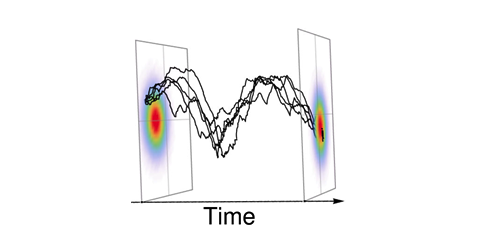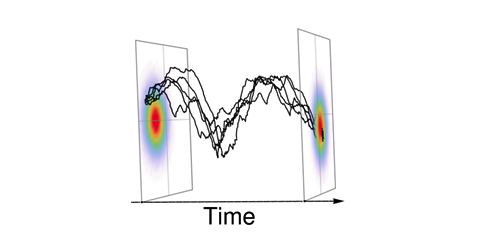Fluctuation Theorems Tested with a Levitating Bead
Scrambled eggs never unscramble. But the same isn’t true for microscopic objects, which are not prevented from behaving as if time ran in “reverse.” To deal with this possibility, researchers have formulated microscopically relevant thermodynamic relations over the past two decades. A new experiment tracking the position and instantaneous velocity of an optically levitated, nanosized bead provides verification of several of these relations, including the Jarzynski equality and the differential fluctuation theorem (DFT). A better understanding of these theorems could provide insights into the origin of time’s arrow.
Microscopic objects, such as biological molecules and nanomachines, can experience nonequilibrium fluctuations that decrease entropy—in violation of the second law of thermodynamics. But researchers have shown that these fluctuations do obey other statistical relationships. The DFT, for example, relates the probability of a forward process (say, an object moving from position to position ) to the probability of the reverse process (moving from to ).
Tongcang Li from Purdue University, Indiana, and colleagues have performed the first experimental test of the DFT in a system with an arbitrary initial state. With a focused laser beam, they levitated a silica nanobead while continuously tracking its position and velocity. They performed work on the bead by briefly applying an optical force with a second laser. By recording over a million cycles of force-on/force-off, the researchers collected a large data set of bead movements with roughly the same starting and finishing positions ( and ) or velocities. The statistics of forward and reverse processes agreed with the predictions from DFT, as well as other relations. In future tests, the bead could be cooled to near zero temperature to investigate how quantum fluctuations affect the thermodynamics.
This research is published in Physical Review Letters.
–Michael Schirber
Michael Schirber is a Corresponding Editor for Physics based in Lyon, France.





